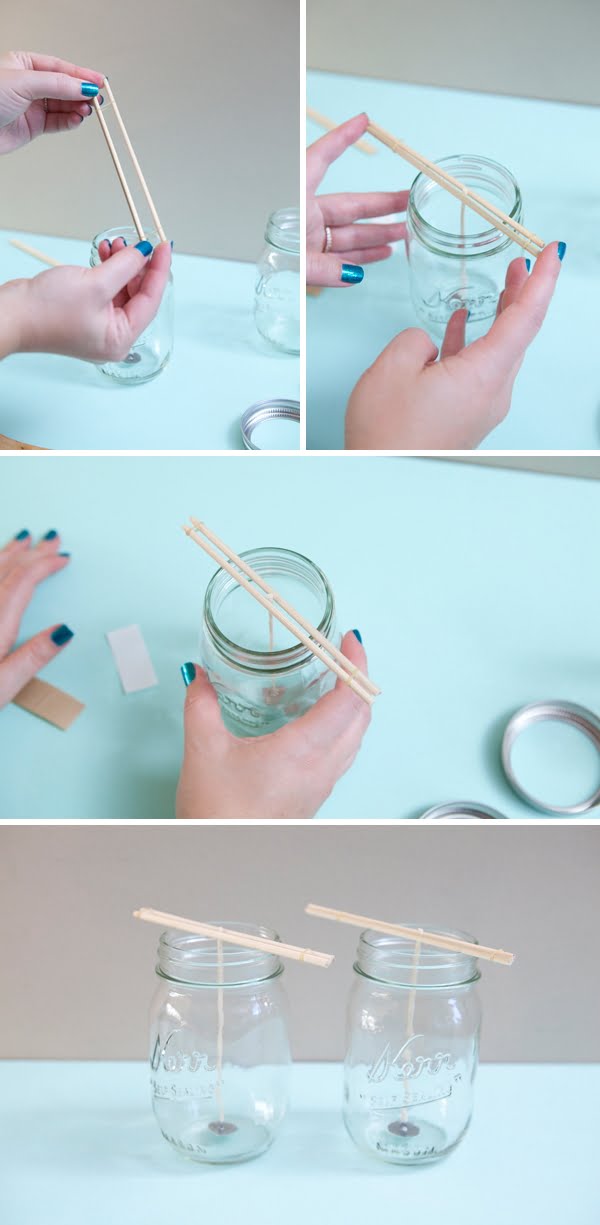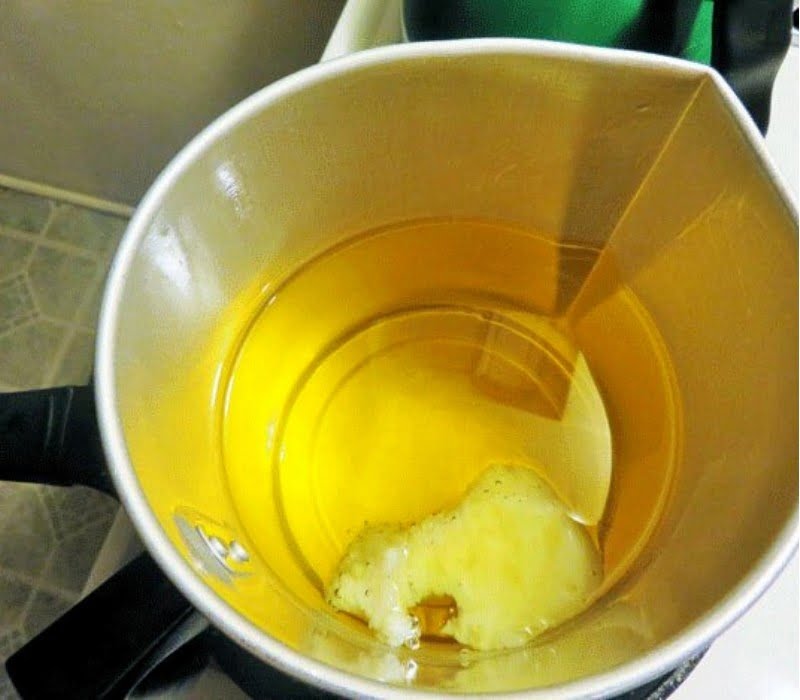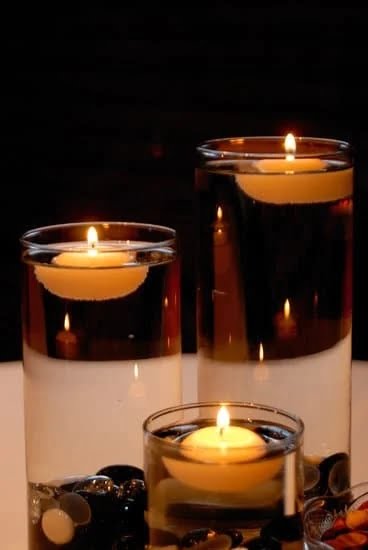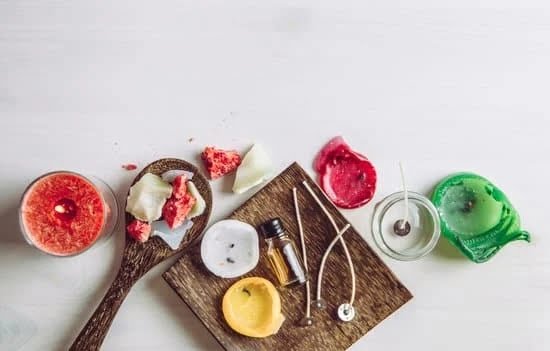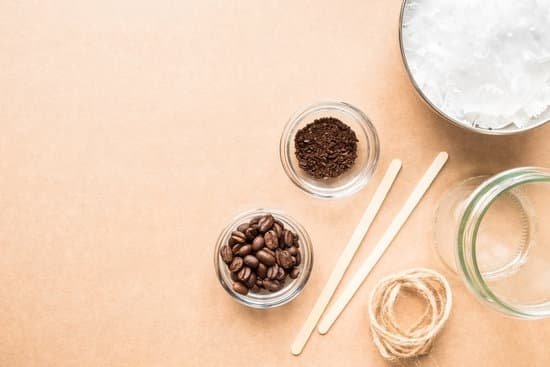Candle making is a popular and creative hobby that allows individuals to express their personal style and create unique ambiance in their living spaces. One way to enhance the experience and add a touch of natural beauty to homemade candles is by incorporating essential oils. But can you use essential oils for candle making?
In this article, we will explore the world of candle making with essential oils, understand the benefits of essential oils and learn about the science behind candle making. We will also debunk myths surrounding the use of essential oils in candles and provide tips for selecting the perfect scents.
Essential oils have long been used in aromatherapy for their therapeutic properties, as they are derived from plants and can promote relaxation, improve mood, and provide various health benefits. When used in candle making, these concentrated plant extracts can infuse not only delightful fragrances but also potentially offer additional wellness benefits.
To fully understand how essential oils can be incorporated into candles, it is important to distinguish between fragrance oils and essential oils. While fragrance oils are synthetic compounds specifically designed for scenting products like candles, essential oils are extracted directly from plants using methods like steam distillation or cold pressing. This distinction affects not only the potency but also the potential therapeutic effects of the scents added to your homemade creations.
By debunking common myths surrounding the usage of essential oils in candle making, we will provide clarity on whether it is safe, effective, and recommended to utilize these natural extracts in your artistic endeavors. Additionally, we will offer guidance on how to select high-quality essential oils that align with your desired fragrances while maintaining safety standards.
With a focus on education and creativity, this article seeks to guide you through every step of incorporating essential oils into your candle-making process. Whether you’re new to this craft or an experienced artisan looking for fresh ideas, we hope this comprehensive exploration will ignite your passion for creating one-of-a-kind candles that not only look beautiful but also fill your home with delightful scents and potential wellness benefits.
So, let’s dive into the world of candle making with essential oils and embark on a fragrant journey together.
Understanding Essential Oils
Essential oils have gained popularity in recent years for their various benefits and uses. One of the most common ways to enjoy these oils is through aromatherapy, which involves using scents to promote relaxation, improve mood, and enhance overall well-being. In this section, we will delve into a brief introduction to aromatherapy and explore the benefits of essential oils.
Aromatherapy is a holistic healing practice that dates back centuries. It involves using natural plant extracts, known as essential oils, to promote physical and emotional well-being. These oils are derived from plants’ leaves, flowers, stems, roots, or bark and are highly concentrated with aromatic compounds.
One of the key benefits of essential oils is their ability to affect our limbic system. The limbic system plays a crucial role in controlling emotions and memories. When we inhale certain scents, they directly stimulate the limbic system and can trigger specific emotional responses or memories.
Each essential oil has its unique therapeutic properties and benefits. For example:
- Lavender: Known for its calming properties, lavender essential oil can help reduce stress and promote better sleep.
- Peppermint: Peppermint essential oil is invigorating and can help improve focus and boost energy levels.
- Eucalyptus: With its refreshing scent, eucalyptus essential oil is commonly used for respiratory issues such as congestion or sinusitis.
It’s important to note that while essential oils offer numerous benefits, they should be used with caution. Some individuals may have sensitivities or allergies to certain oils, so it’s always recommended to perform a patch test before use. Additionally, pregnant women or those with medical conditions should consult with a healthcare professional before incorporating essential oils into their routine.
Understanding the basics of aromatherapy and the benefits of essential oils is crucial when considering using them in candle making. By harnessing the power of these natural extracts, you can create candles that not only provide a pleasing aroma but also offer potential therapeutic effects. In the next section, we will explore the differences between fragrance oils and essential oils, specifically in the context of candle making.
The Science behind Candle Making
When it comes to candle making, one of the key factors that determines the quality and scent of the candles is the choice of oils used. Fragrance oils and essential oils are two popular options, each with their own unique characteristics. Understanding the science behind candle making can help us grasp the differences between these two types of oils.
Fragrance oils, also known as synthetic oils, are created in a laboratory using a combination of artificial and natural ingredients. These oils are specifically formulated to provide a strong and consistent aroma when used in candles. Fragrance oils come in a wide variety of scents, allowing candle makers to have an extensive range of choices.
On the other hand, essential oils are derived from plants through processes such as distillation or cold pressing. These oils contain the concentrated compounds found naturally in plants and offer a more authentic aromatic experience. Essential oils are known for their therapeutic properties and are often used in aromatherapy for relaxation and stress relief.
One major difference between fragrance oils and essential oils is their strength of scent. Fragrance oils tend to have a stronger aroma compared to essential oils since they are specifically designed for this purpose. Essential oils, on the other hand, have a more subtle scent that may require blending or higher concentrations to achieve similar levels of fragrance.
Can You Use Essential Oils for Candle Making? Debunking Myths and Clearing the Air
Essential oils have become increasingly popular in various forms of aromatherapy, but can they be used for candle making? This section will debunk common myths and provide clarity on using essential oils in candle making.
One common misconception is that essential oils cannot be used in candles because they are flammable. While it is true that essential oils are highly concentrated plant extracts and should not be used alone as a fuel source, they can still be safely incorporated into candle making. When used properly and in appropriate amounts, essential oils can give candles a delightful scent without posing a fire risk.
Another myth surrounding the use of essential oils in candle making is that they are not stable at high temperatures. However, this is not entirely accurate. Essential oils do have different flashpoints, which refers to the temperature at which they ignite when exposed to an open flame.
It is important to choose essential oils with higher flashpoints when creating scented candles to ensure safety. Additionally, adding essential oils to the melted wax during the candle-making process helps distribute the fragrance evenly throughout without compromising their stability.
Incorporating essential oils into your candle making allows you to enjoy their therapeutic benefits while adding a pleasant aroma to your space. From reducing stress and enhancing relaxation to uplifting mood and promoting focus, different essential oils offer various benefits that can enhance your overall well-being. By using high-quality, pure essential oils and following proper guidelines for usage, you can create beautiful and fragrant candles that bring both sensory pleasure and therapeutic effects.
| Myth Debunked | Fact |
|---|---|
| Essential oils are highly flammable and should not be used in candles. | When used properly, essential oils can be safely incorporated into candle making. |
| Essential oils are not stable at high temperatures. | Adding essential oils during the candle-making process distributes the fragrance evenly without compromising stability. |
| Essential oils do not offer any therapeutic benefits in candles. | Using high-quality, pure essential oils can provide various therapeutic benefits when incorporated into candles. |
Selecting the Perfect Essential Oils
When it comes to candle making, selecting the perfect essential oils is a crucial step in creating a desired fragrance. The choice of scents can greatly impact the ambiance and mood of a room, making it important to choose oils that align with your preferences and intentions. Here are some considerations and tips for choosing the right essential oils for candle making.
Understanding Scent Profiles
One of the first things to consider when selecting essential oils for candle making is their scent profile. Essential oils come in a wide range of fragrances, from floral and citrusy to woody and herbal. It’s important to understand the different scent profiles and how they can work together or complement each other.
One way to approach this is by categorizing scents into three main groups: top notes, middle notes, and base notes. Top notes are lighter and more volatile, providing an initial burst of fragrance when the candle is lit. Middle notes form the body of the scent and may take longer to release their aroma. Base notes are heavier scents that provide depth and longevity to the fragrance.
Experimenting with different combinations of top, middle, and base note essential oils can help you create well-balanced and complex aromas for your candles.
Consider Your Intentions
Another consideration when selecting essential oils for candle making is your intentions or desired effects. Different scents can evoke specific emotions or promote certain moods. For example, lavender essential oil is known for its calming properties, while citrusy scents like lemon or orange can be uplifting and energizing.
Think about how you want your candles to make people feel or what atmosphere you want to create in a space. If you’re using candles for relaxation or self-care purposes, consider incorporating soothing essential oils such as chamomile or ylang-ylang. On the other hand, if you’re aiming for a lively atmosphere during social gatherings, opt for more invigorating scents like peppermint or eucalyptus.
Quality and Purity
When choosing essential oils for candle making, it’s important to prioritize quality and purity. Using high-quality essential oils ensures that you’re getting the true essence of the plant without any synthetic additives or contaminants.
Look for reputable suppliers that provide information about the sourcing and extraction methods of their essential oils. It’s also a good idea to check for third-party testing or certifications that validate the purity and authenticity of the oils.
Additionally, consider purchasing small sample sizes of different essential oils to test them before committing to larger quantities. This allows you to evaluate their scent throw, performance in candle making, and personal preferences before investing in bulk amounts.
By considering scent profiles, intentions, and ensuring quality and purity, you can select the perfect essential oils for candle making. These factors will play a crucial role in creating unique and delightful aromas that enhance your candle-making experience.
Mixing and Blending
One of the most exciting aspects of using essential oils in candle making is the ability to create unique aromas by mixing and blending different scents. By combining different essential oils, you can create custom fragrances that suit your preferences and set the perfect ambiance for any occasion.
When it comes to mixing and blending essential oils for candle making, there are no strict rules or limitations. It’s all about experimentation and finding the right balance. However, there are a few tips and considerations that can help you achieve the desired results:
- Start with a Plan: Before you dive into mixing different essential oils, it’s helpful to have a clear idea of what kind of scent you want to create. Think about the mood or atmosphere you want to evoke with your candle and choose essential oils that complement each other.
- Consider Scent Families: Essential oils can be categorized into scent families such as floral, citrus, herbal, woody, or spicy. By selecting oils from the same family, you can ensure that they blend well together and create harmonious fragrances.
- Use Top, Middle, and Base Notes: Just like perfumes, candles also have top notes (initially noticeable), middle notes (the heart of the fragrance), and base notes (linger after the candle has burned). To create a well-rounded aroma, incorporate oils from each category into your blend.
| Blend | Essential Oils |
|---|---|
| Calming Blend | Lavender + Bergamot + Chamomile |
| Refreshing Blend | Lemon + Peppermint + Eucalyptus |
| Spicy Blend | Cinnamon + Clove + Ginger |
| Woodland Blend | Pine + Cedarwood + Sandalwood |
Remember, the combinations are not limited to the examples above. Feel free to explore different essential oil combinations and find what works best for you. Don’t be afraid to experiment and unleash your creativity.
Essential Oil Safety and Precautions
Understanding Safety Guidelines for Essential Oils
When it comes to using essential oils in candle making, it is important to prioritize safety. Essential oils are highly concentrated plant extracts that can have powerful effects on both the body and mind. Therefore, it is crucial to understand and follow safety guidelines to ensure proper usage.
One of the most important safety considerations when working with essential oils is their potential for skin irritation or allergic reactions. Some essential oils are known to be more skin-sensitive than others, so it is essential to always perform a patch test before incorporating them into your candles. This involves diluting the essential oil and applying a small amount onto your skin, then waiting 24 hours to check for any adverse reactions.
Additionally, it is crucial to remember that not all essential oils are safe for use around children, pets, or individuals with certain health conditions. Certain essential oils can be toxic if ingested or may cause respiratory issues when inhaled. It is vital to research each specific oil you intend to use and determine whether they are safe for your particular circumstances.
Guidelines for Proper Usage of Essential Oils in Candle Making
To ensure the proper usage of essential oils in candle making, follow these guidelines:
- Use high-quality, pure essential oils: The quality of the oil directly affects its scent throw and overall effectiveness in candle making. Opting for pure, organic essential oils will result in a superior fragrance.
- Measure carefully: Essential oils are potent substances and should be measured accurately according to the candle recipe being used. Overuse can lead to overpowering scents or even potential safety hazards.
- Consider flash points: Each essential oil has a different flash point, which is the temperature at which it ignites or catches fire momentarily. Ensure that you select oils with flash points suitable for candle making and avoid overheating during the pouring process.
- Experiment with blending: Essential oils can be combined to create unique scent combinations. However, it is crucial to experiment in small batches and keep a record of the proportions used to achieve desired results.
- Incorporate essential oils at the appropriate temperature: To retain the full potential of the essential oil’s aroma, it is important to add them during the candle making process when the wax has cooled down but is still malleable.
By following these safety guidelines and proper usage techniques, you can confidently incorporate essential oils into your candle making process while ensuring a safe and enjoyable experience.
Step-by-Step Guide
Gather Your Materials
Before you can incorporate essential oils into your candle making process, it’s important to gather all the necessary materials. You will need the following:
- Candle wax: Choose a high-quality candle wax, such as soy, beeswax, or paraffin wax.
- Wick: Select a wick that is appropriate for the size and type of candle you are making.
- Container: Decide on the container or mold you will use to pour your melted wax into.
- Essential oils: Choose your desired essential oils based on the scents you want to achieve in your candles.
- Double boiler or melting pot: You will need a vessel to melt your wax safely.
- Thermometer: A thermometer will help ensure that you heat your wax to the correct temperature.
Measure and Melt Your Wax
The first step in incorporating essential oils into your candle making process is to measure and melt your wax. Start by weighing out the desired amount of wax for your candle and place it in a double boiler or melting pot. Heat the wax over low to medium heat until it reaches its melting point, which varies depending on the type of wax being used.
It’s important to monitor the temperature of the wax using a thermometer to ensure that it doesn’t overheat or burn. Different types of waxes have different melting points, so refer to the manufacturer’s instructions for guidance.
Add Essential Oils
Once your wax has melted and reached the desired temperature, it’s time to add the essential oils. To determine how much essential oil to use, a general rule of thumb is 1 ounce (30 mL) of essential oil per pound (450 grams) of wax. However, this may vary depending on personal preference and the strength of fragrance you desire.
Carefully measure out your chosen essential oil(s) and add them to the melted wax. Stir gently but thoroughly to ensure that the fragrance is evenly distributed throughout the wax. Take your time during this step to ensure that the essential oils are fully incorporated.
With these three simple steps, you can easily incorporate essential oils into your candle making process and create beautifully fragrant candles. Remember to experiment with different combinations of essential oils to create your own unique scents. Happy candle making.
Showcasing the Best Essential Oil Candle Recipes
Candle making can be a fun and creative activity, especially when incorporating essential oils into the process. Not only do essential oils add natural fragrance to your candles, but they also offer therapeutic benefits through aromatherapy. In this section, we will showcase some of the best essential oil candle recipes, providing you with creative ideas and combinations to enhance your candle-making experience.
When selecting essential oils for your candles, it is important to choose scents that complement each other and create a pleasant aroma. Here are some popular essential oil combinations that you can try:
- Relaxing Lavender: Combine lavender essential oil with clary sage or chamomile for a soothing and calming scent. This combination is perfect for creating a tranquil atmosphere before bedtime.
- Energizing Citrus: Create an invigorating blend by mixing citrus essential oils such as lemon, orange, and grapefruit. This combination is great for boosting energy levels and uplifting the mood.
- Spicy Holiday Blend: Capture the essence of the holiday season by combining cinnamon, clove, and orange essential oils. This warm and spicy blend will fill your home with a cozy and festive aroma.
- Floral Delight: If you prefer floral scents, try blending ylang-ylang, geranium, and rose essential oils together. This combination creates a romantic and luxurious ambiance in any room.
To incorporate these essential oils into your candle making process, simply add them to the melted wax before pouring it into the containers or molds. It is recommended to use about 30-40 drops of essential oil per eight ounces of wax for optimal fragrance.
Remember to always follow safety guidelines when working with essential oils in candle making. Essential oils are highly concentrated substances and should be handled with care. Keep them out of reach of children and pets, avoid direct skin contact or ingestion, and never leave burning candles unattended.
By experimenting with different essential oil combinations in your candle making, you can create unique and personalized scents that suit your preferences and create a desired ambiance in your space. So, get creative and embark on a fragrant journey with essential oil candle making.
Essential Oil Candle Making Tips and Tricks
In order to maximize fragrance and achieve desired results in essential oil candle making, there are several tips and tricks that can be implemented. These techniques will not only enhance the scent of your candles but also improve their overall quality. Here are some essential oil candle making tips and tricks to consider:
- Use high-quality essential oils: When it comes to achieving a strong and long-lasting fragrance in your candles, it is crucial to use high-quality essential oils. Look for oils that are 100% pure and derived from natural sources. These oils tend to have a higher concentration of aromatic compounds, resulting in a more potent scent.
- Experiment with different scent combinations: One of the benefits of using essential oils in candle making is the ability to create unique aromas by blending different scents together. Try experimenting with various combinations to find the perfect balance of fragrances. Consider creating a blend with top, middle, and base notes for a more complex scent profile.
- Add essential oils at the right temperature: The temperature at which you add the essential oils into your candle wax can significantly impact their fragrance performance. It is recommended to add the oils when the wax is around 185-195°F (85-90°C) for optimal scent throw. Adding them at higher temperatures may cause some of their volatile compounds to evaporate before they can be released into the air.
- Allow sufficient curing time: Curing refers to the process of allowing the candle to sit undisturbed after it has been poured and cooled completely. This allows the fragrance in the candle to properly develop, resulting in a better scent throw when burned. Depending on the type of wax used, it is generally recommended to cure candles for at least 48 hours before lighting them.
- Consider using fragrance enhancers: If you find that your candles aren’t producing enough fragrance, you can enhance their scent by using fragrance enhancers such as fixative agents or candle additives. These additives can help bind the fragrance oil to the wax and extend its scent throw.
By following these essential oil candle making tips and tricks, you can create candles with enhanced fragrance and achieve desired results. Whether you are making candles for personal use or as gifts, incorporating these techniques will help you create beautifully scented candles that enhance any space with their aromatic presence.
Conclusion
In conclusion, the answer to the question “Can you use essential oils for candle making?” is a resounding yes. Throughout this article, we have explored the world of candle making with essential oils and debunked common myths that may have deterred some from incorporating these natural scents into their candles. The benefits of using essential oils in candle making are vast, from creating a soothing and relaxing atmosphere to enjoying the therapeutic properties they offer.
Understanding the science behind candle making and how fragrance oils and essential oils differ is crucial to achieving the desired results. While fragrance oils are created artificially using synthetic compounds, essential oils are extracted directly from plants, capturing their pure essence. This distinction plays a significant role in both the aroma and potential health benefits of your candles.
When selecting essential oils for your candle making projects, there are many considerations to keep in mind. Factors such as scent strength, compatibility with other oils, and personal preference all play a part in choosing the right scents for your creations. Experimentation and creativity are key when mixing and blending essential oils to create unique aromas that will delight your senses.
Safety should always be a top priority when working with essential oils in candle making. It’s important to ensure proper usage by following recommended guidelines for dilution ratios and avoiding certain oils that may be irritating or potentially harmful. Adhering to these precautions will allow you to enjoy all the benefits of essential oil candle making while keeping yourself and others safe.
Incorporating essential oils into your candle making process doesn’t have to be complicated. With our step-by-step guide, you can easily add these beautiful scents to your candles for an elevated sensory experience. Whether you prefer simple single-note fragrances or complex blends, there are countless possibilities for creating stunning candles infused with your favorite essential oil scents.
To inspire your creative journey, we have showcased some of the best essential oil candle recipes that combine various aromas in delightful ways. From invigorating citrus blends to calming lavender and chamomile, these recipes will help you discover new and exciting scent combinations to enhance your candle making projects.
Finally, to maximize fragrance and achieve desired results in your essential oil candles, we’ve shared some tips and tricks to guide you along the way. From proper wick selection and candle care techniques to incorporating additional scent boosters, these strategies will ensure that your candles smell amazing and burn beautifully.
Frequently Asked Questions
Are all essential oils safe for candle making?
Not all essential oils are safe for candle making. While many essential oils can be used to add scent to candles, it is important to properly research and select oils that are safe for this purpose. Some essential oils may have a low flash point, meaning they can easily catch fire when exposed to heat from the candle flame.
Additionally, certain essential oils may contain components that can cause the candle to burn improperly or produce harmful fumes when lit. It is crucial to consult reputable sources and adhere to recommended guidelines when choosing essential oils for candle making.
Can you use essential oils in candles instead of fragrance oils?
Yes, it is possible to use essential oils in candles instead of fragrance oils. Many people prefer using natural essential oils in candle making due to their therapeutic properties and pleasant scents. However, there are some considerations when substituting fragrance oils with essential oils in candles.
Essential oils often have a lighter scent throw compared to concentrated fragrance oils specifically formulated for candles. This means that more essential oil may be needed to achieve the desired fragrance strength in the finished candle. Additionally, as mentioned earlier, not all essential oils are suitable or safe for candle making, so it is important to choose appropriate ones and follow recommended usage rates.
Can essential oils burn in candles?
Essential oils can burn in candles if not used correctly or if they have a low flash point. When an essential oil has a low flash point, it means it can ignite easily when exposed to heat from a candle flame, potentially causing an unsafe situation. It is best to select essential oils that have been specifically tested and approved for candle making by reputable suppliers who provide information on flash points and safety guidelines.
Additionally, proper dosing of the essential oil is crucial as adding excessive amounts could lead to over-saturation of the wick or excessive flaring of the flame, increasing the risk of accidents or uneven burning of the candle. Therefore, careful attention should be given when using essential oils in candles and following recommended usage rates and safety precautions is essential.

Welcome to my candle making blog! In this blog, I will be sharing my tips and tricks for making candles. I will also be sharing some of my favorite recipes.

